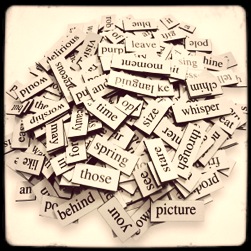"The hardest thing in the world is the writing of straight, honest prose about human beings." — Ernest Hemingway
Hemingway was almost right when he wrote it, but there are harder things a writer can do. He or she can try to write straight, honest prose to human beings while convincing someone else to foot the bill and leave well enough alone.
But most clients aren't like that. They can't leave it alone.
It's not their fault, exactly. Somewhere along the way the communication industry became so miffed over how they might produce enough persuasive content to fill the infinite blankness of the Internet that they began to confuse "content creators" with "writers." They might share some similarities but they're not exactly interchangeable.
One of them can burp out three pages of content in an hour for $25 and never lose a minute of sleep when their client insists on capitalizing titles like foreman and manager. The other one finds such style breaches akin to squeaky thumbscrews. The only thing worse has three letters. SEO.
Sure, some writers have no choice but to acquiesce. It's either that or they'll come up short on the mortgage — something writers a few dozen decades ago wouldn't have cared less about. But that's another story. This story is about something else — it's about the hardest thing in the world.
The hardest thing in the world is teaching someone how to write straight, honest prose to human beings. Some writers insist it can't be done. Maybe they're right and I'm just a masochist.
The reason most of them are skeptical is easy enough to understand. There is a fundamental difference between being able to write (create content) and being a writer. And generally, most people who call themselves writers can only write (and some of them don't write very well). They only think they can.
It's easy enough to see the difference even if the person can't see it themselves. The former can fill page after page of with one-dimensional prose, anything from a postage stamp-sized tweet to a business card book. The latter, on the other hand, captures a sometimes subconscious process of multidimensional thinking that is equally concerned with the mechanics of writing as much as the art of storytelling.
What is this space? Most writers can't even articulate it, which is why great writers — people like Hemingway or Allen Ginsberg or William Saroyan — were always more inclined to tell aspiring writers that either you feel it or you don't. And if you don't feel it, they might insist you don't bother.
I disagree with them a bit. As long as you care enough (and you have to care), you can capture that elusive feeling and learn how to write too. You can be a writer who never sees the job as a boring chore.
The mechanics of multidimensional writing.
Outside of the storytelling, the mechanics of multidimensional writing primarily can be thought of as three considerations that occur seamlessly and simultaneously — mass, space time, and gravity. The terms weren't chosen by accident. They best describe three of layers I mapped out during a class.
Great writers are concerned with the mass (format), space time (consistency and speed), and gravity (connectivity) of everything they write at the same time. If you want to be a better writer, you will too.
Mass. You can size up any writing assignment any way you want, but everyone eventually concludes that there is only a beginning, middle, and end. The genre doesn't even matter. Copywriters create advertisements. Journalists flesh out articles. Fiction writers craft chapters. All three want to capture people's attention up front, tell a story, and finish with a call to action or compulsion to read more.
Space Time. As odd as the term might seem applied to writing, space time fits especially well. Writers are concerned with the flow and consistency (condition of adhering together), the relative pace and speed that the reader takes in the content, and some writing essentials whether mine or something more eloquent. All of these qualities make reading the content worthwhile.
Gravity. While some writers (especially the greats) argue they only answer to themselves, it isn't exactly true. They still have to find a voice (organizational or personal), apply a style with suitable linguistic or industry standards, and consider the audience because we all speak and write differently to our mothers, fathers, wives, friends, colleagues, and children.
If you couldn't see the difference between writing and being a writer before, perhaps you can now. It takes a little more than gathering up a pretty pile of words and putting them in order. Real writers consider everything at once and then run back through every word, sentence, and paragraph afterward.
You can tell when they don't. You can tell when I don't. But can you tell when you don't? It could be the best question you ask before you hit publish or send something to print. Every little bit of it counts.





























